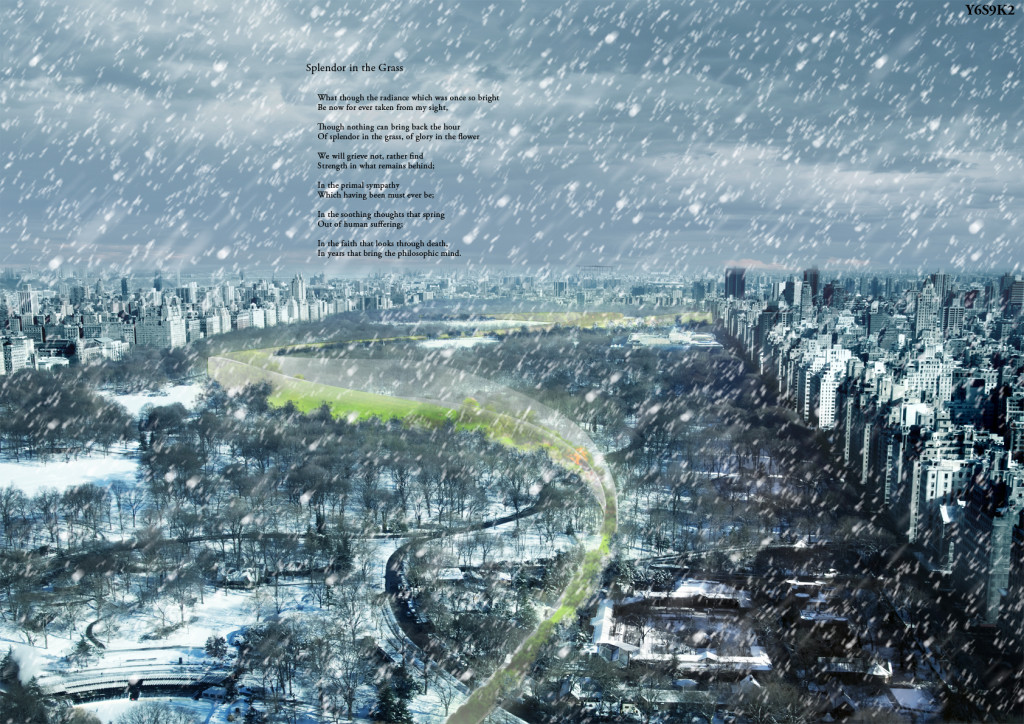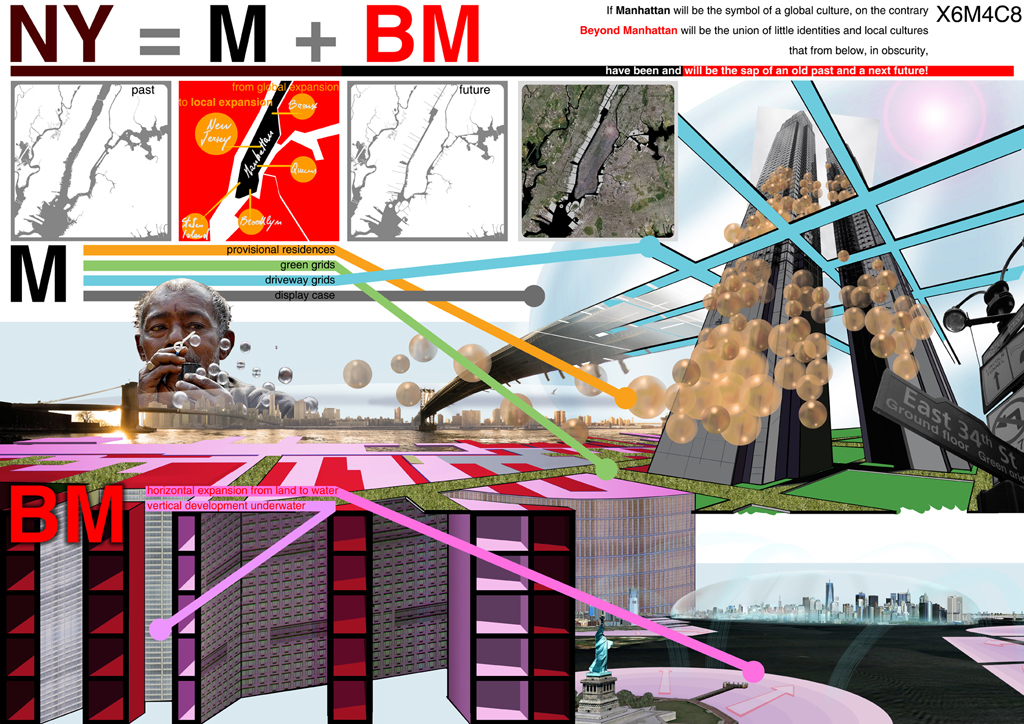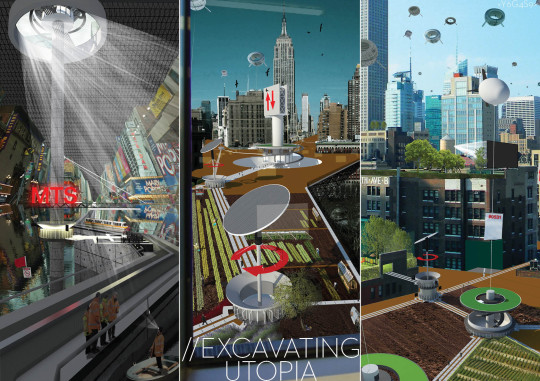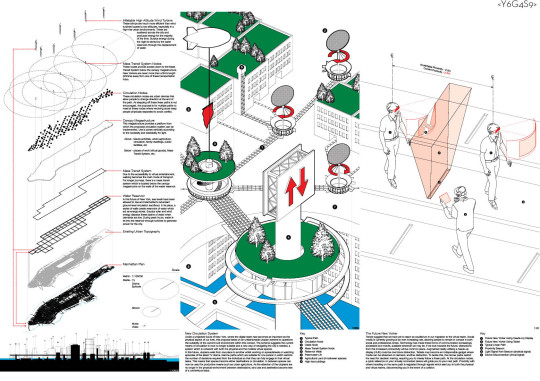Info:
Title: Excavating Utopia - Code: Y6G4S9Contest: NY / 2012
By: M. Hung - A. Elmenani
Views: 3341 Likes: 2
Votes:
JOSHUA PRINCE-RAMUS2 EVA FRANCH I GILABERT1 ROLAND SNOOKS1 SHOHEI SHIGEMATSU2 ALESSANDRO ORSINI2 MITCHELL JOACHIM21.7
Excavating Utopia
The proliferation of modern technology into every aspect of our lives has had profound effects on the way that we live, yet the built environment appears resistant to change; unable to adapt to these new contexts. As one of the most densely populated places in the world and a city where the production of virtual goods heavily outnumber physical ones, New York offers fertile ground for speculation on future configurations of the city. A city that better attend to this man-made technological wilderness we rely so heavily on. Unlike the totalizing visions of the 1960′s megastructure projects which sought to impose a radically different way of living, this utopian project seeks to recompose the city in an attempt to create a hybrid place where the human and multiple virtual realms can coalesce.
No longer are traditional notions of the street, road and building able to cope with the ever increasing integration of personal electronics that augment our leisure and working lives. This disjunction is evident in daily occurrences within New York; from minor frustrations of walking into others whilst engaged with a handheld gadget to other more tragic scenes. With the growing significance of the virtual realm, turning back and surrendering these new platforms of opportunity offered by technology is not an option for the city. Increasingly careers and reputations, interest groups and leisure activities are formed through this abstract space, making it indispensable to future New Yorkers.
In this future, technology has changed our psycho-geographies. No longer can absolute time be used as a relative measure of distance but is replaced by a measurement in standard lengths of media. Just as time has replaced distance in the development of new forms of transport in the past, readily available media has reshaped the perception of these utopians who freely engage in the virtual realm in the event of boredom. Distance become inextricably linked to lengths of films, documentaries and clips.
Our proposal speculates on the makeup of New York City under a projected future. A future where the continuing migration of our lives into the virtual realm has reached an equilibrium. In this context, place based communities have been completely replaced by communities that shed the parameters of distance afforded by new means of communication. For similar reasons, extreme individualism is now the norm suggesting a built environment of circulation and destinations. The meticulously planned business and social calendars of these utopians no longer require public spaces that can be drifted into but rather public oases that better function individually as meeting points, areas of contemplation, places of conversation; each a purposeful retreat. Within the scheme these oases are part of a networked whole, reachable by paths that restrict and co-ordinate movement in the public realm. This allows future New Yorkers to productively respond to emails or indulge in media whilst walking from one destination to another, without the conflicts that occur under the current circulation system. The redundant ground-level circulation has embraced the rising sea levels and a new canopy level has been established providing a lighter and healthier environment for activities where light in required and desirable.
The current grid plan premised on the expression of democracy has lost all relevance in our advanced capitalist society. By rethinking circulation and planning to facilitate the truly democratic virtual realm, this proposal updates New York whilst remaining true to the core values of the city.








